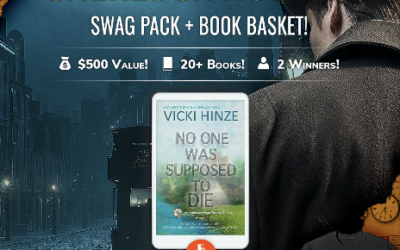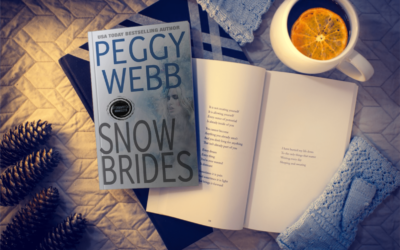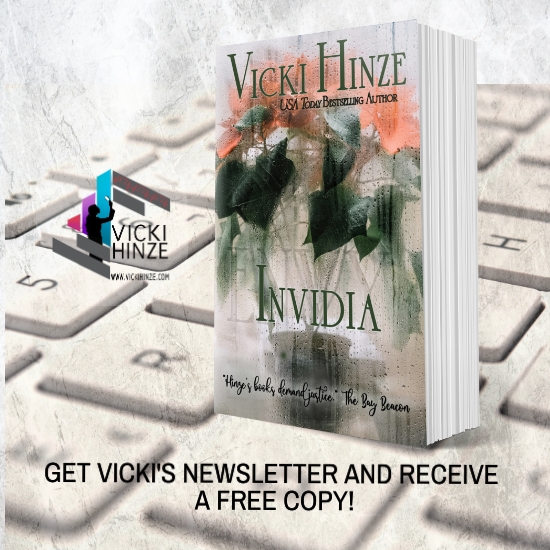Vicki Hinze © 2003-2011
Q. I’m about 11,000 words into a suspense novel, but I can’t make myself move ahead in the story. The story revolves around not only the “main” protagonist, but his daughter and the two antagonists involved are also important catalysts for conflict. I have a feeling the reason my brain has fossilized is because I’ve noticed that my main protagonist hasn’t been in the last several scenes. Something in my head keeps telling me that he should be more involved (and he is indirectly). But on the other hand, it seems to me that if I don’t get into these other character’s heads occasionally (particularly early on) the story won’t develop and the conflicts won’t be effective. Should I worry that my main protagonist isn’t in every scene or drops out of sight for several scenes before returning? I hate being at a standstill, but I’m frozen in time.
A. It’s difficult to give you a firm do this or that response without reading the text or having a firm grip on the story and knowing what it is you’re trying to accomplish, but I can offer you a few general tips from the trenches.
1. There’s an article on Point of View in my library. You might want to take a look at it and see if there’s anything there that makes this click for you. Often we “think” we need alternate points of view to bring in the other characters’ motives, but we can bring them into clear focus through the protagonist’s point of view.
Consider this: When you are in a character’s point of view, the reader is inside that character’s head. Every time you change point of view, the reader has to get inside another character’s head. That generates psychic distance between the characters and the reader. Too much distance, or too many point of view changes, and the reader doesn’t attach to the character. A loss of attachment means less character empathy, less reader involvement, and that equates to less immediacy. That equates to the reader not caring what happens to the characters, and that equates to the reader readily putting the book down and not reading.
So there is great value in keeping to a minimum number of point of view characters. There are some stories–Lady Liberty, for example–where it is impossible to not use multiple points of view because there is no way for the protagonist to know these other people/events/things. Though that was the case in this novel, the multiple points of view was a problem for some readers. From feedback I received, that problem was reported most often by readers accustomed to reading single viewpoint novels, but it was an issue for them and that makes it a valid writer’s concern. (Feedback from readers who often read multiple viewpoint novels included no challenges with following the characters/story-line.) Just some thoughts to keep in mind. It is important to know your readers because it does make a difference. Ask yourself what are they accustomed to reading?
2. It’s not uncommon for a protagonist not to appear for a couple scenes in a mainstream novel. If you’re writing a genre novel, be careful. If your protagonist isn’t in the scene, what’s happening in the scene should be about the protagonist. While this isn’t an unbreakable rule, it is one you shouldn’t break needlessly–and one you won’t break easily without consequences. Weigh and judge. The consequences could well be worth paying, if that’s what best suits the story. But do try to fit within the framework natural to your novel type before you complicate matters for yourself by writing outside it.
3. If you’re running dual protagonists and dual antagonists, and you must use all four points of view, set a pattern early in the novel for doing so and continue it on throughout the book. The novel then develops a rhythm of A to B to C to D to A and so forth. If you stick with that, the reader subconsciously expects it, and so the reader follows in the flow of the book. This helps keep the reader on track and the novel on track. The reader isn’t distracted trying to remember who is who and what is happening with that character. If you need strong examples, Jeffrey Archer is particularly skillful at this.
It’s when you set the pattern and then handle point of view haphazardly, not following the pattern you set, that you into trouble. Why? Because the reader never settles into the rhythm of the novel, and subconsciously realizes it and is irritated by it. Not settling into the novel nets the same type reaction to the book as not identifying with the characters. The reader never forgets s/he is reading and can’t get lost in the story. That’s another form of psychic distance and not the type you create intentionally.
4. If your head is telling you to get back to your protagonist, the odds are very high that’s exactly what you need to do. Writers, like readers, react internally to that novel rhythm. While I hate making blanket statements about writing because there are ALWAYS exceptions, I will make this one because it’s yet to fail to stand: listen to your inner voice–or to what your head is telling you.
Your instincts flow directly from your subconscious, which takes everything in and forgets nothing. Often it’s worked out problems in the novel you haven’t yet consciously realized exist. So you see why it is important to listen to your instincts. They’re your compass during the writing of the novel.
5. I wanted to chat just a second with you about hitting brick walls. Often, we think they’re brick but they’re just mud–not allowing us to see clearly beyond them–yet. Don’t give up on them, get tough on them. Focus intensely on that wall and on a way around it. Often by doing this–giving it your full attention–you’ll come up with a very creative (read that: fresh and original) way of doing what you must next do to get the story moving again.
Check your conflicts. Often, if they’re too weak to carry the weight of the story, we just kind of fizzle. Too many times in this situation, writers will delete the conflict. Instead, make it stronger. Do the worse possible thing you can do to make the odds against your character impossible. Then do it again–until you can’t see how in the world s/he could ever succeed. Then, find a logical, credible, non-coincidental way for the character to resolve, overcome, go around the conflict. That makes for a stronger–and far more interesting–story.
Check your characters’ motivations. If they’re surface and not inspired by something of serious consequence–something that really matters–to the character, then his/her reasons for acting, the urgency to act, is undermined. The characters are hampered by dead weight. Give them motivations that are critically important to them. Critically important. And a reason that they must act right now. This generates immediacy that translates to the reader, incites the reader and generates interest. It creates empathy, and bonds the reader and character, and that makes for a good book.
Check what’s at stake. If the characters’ don’t stand to lose something significant, it’s going to diminish what they’re doing and their desire to do it. It’s also going to reduce the readers’ interest level in what is happening and to whom. Establish the stakes and then raise them. Then raise them again and again, throughout the novel. Whatever the stakes are, they should always escalate through the story and not diminish until the resolution phase of the novel.
If you check the conflicts, the characters’ goals, motivations, and stakes, then you should have all the bones to make a strong spine for your novel, and there should be no brick walls. If in spite of these things you run into one, don’t back off. Charge ahead and make things worse, and then make them better.
Consider this just as you would a physical brick wall that blocks a road you must cross. If you can’t go through it, go around. If you can’t go around, go over it. If you can’t go over it, go under it. Do whatever you must to get beyond the roadblock. Only if you’ve done ALL those things and you still can’t get around the brick wall do you take an alternate route. And if you do, make sure that road is flooded. 🙂




